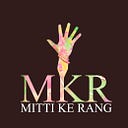Who was Lal Bahadur Shastri
Lal Bahadur Shastri, born in Mughalsarai, a small railway town on 2nd October 1904, sharing his birthday with Mahatma Gandhi and later become his disciple. His first encounter with Mahatma Gandhi was in a public meeting in Benares when he was 16 years old and got deeply impressed by his call for students to withdraw from government schools and join the non-cooperation movement. He left the school and join congress as a volunteer even get arrested but left off as he still was a minor.
He also joins Kashi Vidya Peeth in Varanasi, which was inaugurated by Gandhi Ji on 10th February 1921. He graduated with a first-class degree in philosophy and ethics from Vidyapeeth in 1925.
After his education, his journey never stops on the way to make India free. He becomes a mature member of the congress, worked as an organizing sectary of the parliamentary board in UP, and also served as an elected representative from United Provinces in 1937 and 1946.
After independence, he was appointed a parliamentary secretary in Uttar Pradesh and also become the ministry of police and transport. As a police minister, he ordered to use water jets rather than lathi charge and become successful in curbing communal riots in 1947, mass migration, and resettlement of refugees.
In 1951, he was appointed as a cabinet minister and in 1964 as a prime minister.
In his tenure, the ‘Madras Anti-Hindi agitation of 1965’ was observed, as they don’t want Hindi as an official language. To calm the situation, He assured the people that English will also be an official language that will help the non-Hindi speaking states.
The White Revolution, a national campaign to increase the production and supply of milk by supporting the cooperatives of India. He also promoted the Green Revolution to increase the production of high yielding varieties of wheat and rice.
The most famous vrat of India, Shastri Vrat to motivate the country to leave one meal a day so that the food saved can be distributed to affected parts of the country. This vrat get popular support as even the eateries and restaurants close their shutters in the evenings. His slogan, “Jai Jawan Jai Kisan” which was given by him in Allahabad, become a national slogan.
In his tenure, India also faces the Indo Pak war of 1965 which ended with the Tashkent Declaration on 10th January 1966. And while returning from Tashkent on 11th January 1966, he died from a heart attack. Although many close relatives and supporters refuse to accept his death and allege foul play. He becomes a national hero and the Vijay Ghat memorial is established in his memory.
Also, an epic poetry book in Hindi titled “Lalita ka ansoo” was written by Krant M.L Verma about how his wife Lalita Shastri alleged that he was poisoned to death.
In 2019, the Hindi language conspiracy thriller film “The Tashkent Files” was released, which talks about the death of Lal Bahadur Shastri.
Although to this date, it is one of the biggest conspiracies as the Indian government released no information about his death.
Contributed by Abhay Rawat, Content writer at Mitti Ke Rang.
Our Social Media:
Website: https://www.mittikerang.org/
LinkedIn: https://www.linkedin.com/in/mitti-ke-rang-mkr-81b230120/
Twitter: https://twitter.com/mitikerang?s=08
Instagram: https://www.instagram.com/mitti_ke_rang?r=nametag
Facebook: https://www.facebook.com/Mitikerang/
YouTube: https://www.youtube.com/channel/UCLlifUqAQ_4vv8R4B5tqzPg
